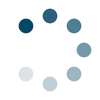A Review of the 2020 SDGI
mai 05, 2021📊The Sustainable Development Goals Index is published once per year by several individuals who gather public data on initiatives, policies, and education country by country in parallel to the 🇺🇳UN Sustainable Development Goals. This can assist countries, the world, and the UN in tracking how much progress is being made towards these goals. Without further ado, let’s summarize the 2020 SDGI results.
Who made it to the top 10?
The top 10 list is as follows:
- Sweden 🇸🇪
- Denmark (yippeee!) 🇩🇰
- Finland 🇫🇮
- France 🇫🇷
- Germany 🇩🇪
- Norway 🇳🇴
- Austria 🇦🇹
- Czech Republic 🇨🇿
- Netherlands 🇳🇱
- Estonia 🇪🇪
Congrats to all of these countries who made it to the top ten! And just because a country hasn’t made it into the top ten doesn’t mean it hasn’t made extraordinary sustainable progress. We at LastObject are proud to have our home country of Denmark ranked number two in the world within this sustainability index. This is amongst the reasons that we are shifting certain products’ manufacturing to Denmark, because of their sustainable initiatives.
While these countries are the closest to achieving the sustainability goals laid out by the UN, certain countries that aren’t on the list have actually made the most progress in the year recorded. According to the SDGI executive summary, asian countries made the most progress since their incorporation in 2015. 📈
So, we know which countries are closest to the sustainable development goals set, but what specifically are they doing well and what do they need to work on? The SDGI represents this progress with colors (green, yellow, orange, and red) and arrows (up, diagonal, sideways, down) to show how they are doing.

Czech Republic, ranked number 8 with an overall score of 80.6 (where 100 means all goals are achieved) has received a ✅green ranking (meaning the SDG has been reached) for three goals:
Goal number 1: No Poverty
Goal number 6: Clean water and Sanitation
Goal number 8: Decent Work and Economic Growth
All the other goals are either 🟨yellow (challenges remain) or 🔶orange (significant challenges remain) except for two red areas, meaning major challenges remain. The two areas are from goal number 13: climate action, and goal number 17: partnerships for the goals. Additionally, the Czech Republic has three areas with up arrows (meaning they are on track), and only one sideways arrow (indicating stagnation) in climate action. All the rest being diagonal.

Denmark, ranked number 2 with a score of 84.6 has received a green ranking for two goals: number 1 which is no poverty, and number 10 which is reduced inequalities. All other goals are yellow with two orange, and 3 reds. The reds are goals 12, 13, and 14 which are responsible consumption and production, climate action, and 🐠life below water, respectively.
Additionally, Denmark has ⬆️up arrows in 7 different goals, with only one sideways arrow in goal number 4: quality education. So, while Denmark only has two green lit goals, it has many up arrows indicating it is on track and making significant progress towards the sustainable development goals.
To look deeper into specific countries you can click on their profiles here.
Where do the world’s biggest polluters stand?

The World Resources Institute puts China and the United States as the world’s biggest 💨polluters. With countries with the biggest impact on the world, it’s important to know where they stand.
China is ranked 48 with an overall score of 73.9. It’s most accomplished areas are in goals:
1: No Poverty
4: Quality Education
8: Decent Work and Economic Growth
All other areas are orange with three yellows and 🔴two reds. The reds are from goal number 10: reduced inequalities, and goal number 14: life below water. China has shown the most progress (with up arrows) in:
1: No Poverty
6: Clean Water and Sanitation
8: Decent Work and Economic Growth
9: Industry, Innovation, and Infrastructure
China has received ⬇down arrows (meaning decreasing progress) in goal 15: Life on Land, and goal 17: Partnerships for the Goals. It’s interesting to see the similarities that a country ranked 48 could have with a country ranked in the top 10. Progress or success in certain areas isn’t always enough to yield an overall good rating.

The United States is ranked number 31 with a score of 76.4. The US doesn’t have any green labels, or in other words it has not reached any goals sufficient enough for green status. The areas that it has to work on most, 🆘in red, is goal:
2: End Hunger
10: Reduced Inequalities
12: Responsible Consumption and Production
13: Climate Action
16: Peace, Justice, and Strong Institutions
17: Partnerships for the Goals
The United States has made progress in several areas however. The States have received ⬆up arrows in:
6: Clean Water and Sanitation
8: Decent Work and Economic Growth
9: Industry, Innovation, and Infrastructure
11: Sustainable Cities and Communities
Although having a lack of green status in any goals, the US has three progress areas in common with China, which is interesting. The fact that the US has made progress in goal 11 reflects the unique power (and maybe therefore responsibility) that local communities have for driving change in the US.

This was a unique year for environmental sustainability, not only from the recent climate projection discoveries but of course from the global pandemic the world was forced into. This has no doubt put extra strain on countries and their progress towards sustainability goals. The SDGI accounts for this and discusses several ways that 🦠COVID has impacted countries.
Having clear goals, with attainable benchmarks is incredibly helpful for countries and communities to maintain their correct direction towards the goals set by the UN. It also allows countries like the US and China, the world’s biggest polluters, to see how countries who are similar reached certain goals they have not been able to. There is a lot of work to be done, even in the top 10 countries. The pursuit may be endless, but it is a worthy one nonetheless. 💚
MORE LastObject News ARTICLES View all ›
Ready to make
the switch?
- Powerful Cleaning
- Dissolves Easily
- Skin-Friendly
- Eco-Friendly
- No Mess














